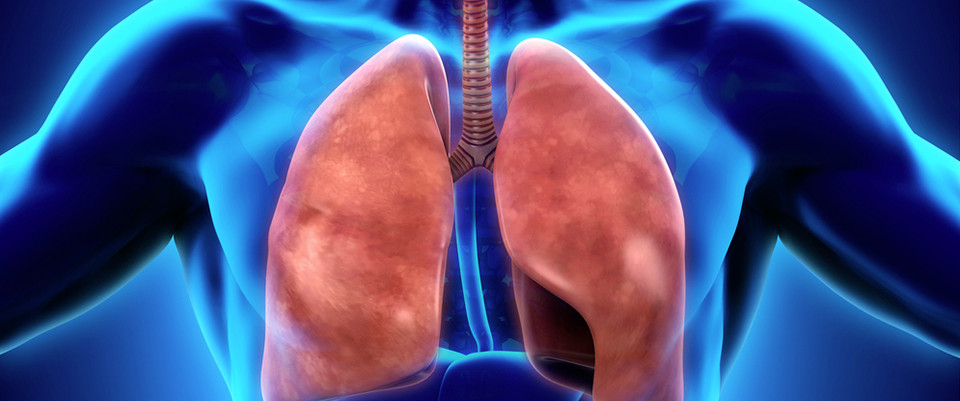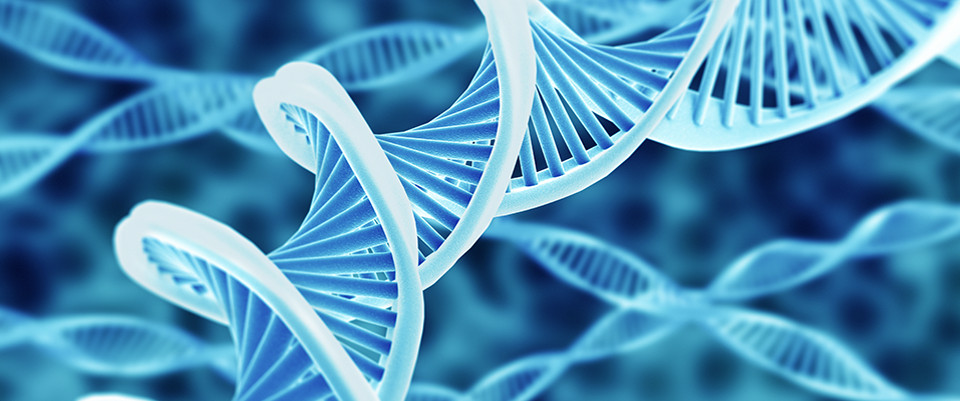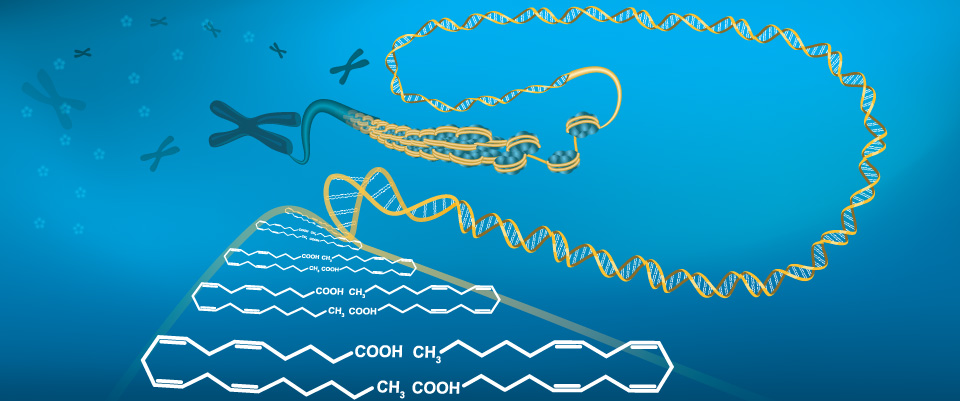PubMed
Integrated metallomic and metabolomic profiling of plasma and tissues provides deep insights into the protective effect of raw and salt-processed Achyranthes bidentata Blume extract in ovariectomia rats.
Related Articles
Integrated metallomic and metabolomic profiling of plasma and tissues provides deep insights into the protective effect of raw and salt-processed Achyranthes bidentata Blume extract in ovariectomia rats.
J Ethnopharmacol. 2019 Feb 19;234:85-95
Authors: Tao Y, Huang S, Yan J, Li W, Cai B
Abstract
ETHNOPHARMACOLOGICAL RELEVANCE: Achyranthes bidentata Blume (AB) is a well-known traditional Chinese medicine for treating osteoporosis and bone fracture. In the current, researches on pharmacological mechanism of AB mostly focused on molecular pathways, knowledge about its metabolic signatures is largely unclear. This study aims to develop an integrative metabolomics and metallomic approach for deciphering the biochemical basis of anti-osteoporosis effects of raw and salt-processed AB.
METHOD: Gas chromatography-mass spectrometry (GC-MS) and inductively coupled plasma mass spectrometry (ICP-MS) were combined for metabolomic and metallomic profiling of rats serum, liver and kidney derived from the sham group, model group, E2, raw and salt-processed AB treated groups. Meanwhile, micro-CT and biomechanical analysis were carried out to ensure the success of the osteoporosis model and to validate the anti-osteoporosis effect of raw and salt-processed AB. Partial least squares discriminant analysis (PLS-DA) was employed to screen potential biomarkers and the MetaboAnalyst and KEGG PATHWAY Database were used to investigate the metabolic pathway.
RESULTS: Raw and salt-processed AB protected the rats against osteoporosis, as evidenced by the restoration of the alkaline phosphatase activity, osteocalcin concentration, urine calcium/creatinine ratio and urine phosphorus/creatinine ratio. The combination of PCA and PLS-DA revealed deviations in ninety-four differential biomarkers between raw AB treated group and model group. The identified biomarkers were primarily engaged in the metabolic pathways including galactose metabolism, urea cycle, arginine and proline metabolism, alanine metabolism, lactose degradation, ammonia recycling and glycine and serine metabolism. The levels of these biomarkers showed significant alterations and a tendency to be restored to normal values in raw and salt-processed AB treated osteoporosis rats. Of note, the levels of trace elements, such as Zn, Se, Mn, Cu and Fe, were elevated after raw and salt-processed AB treatment. Finally, a correlation network diagram was constructed to show the biomarkers perturbed by raw and salt-processed AB.
CONCLUSION: Our findings indicate that raw and salt-processed AB has positive effects on osteoporosis rats. Meanwhile, metabolomic and metallomic method coupled with metabolites enrichment analysis and pattern recognition serves as a useful tool for revealing the action mechanism of traditional Chinese medicine.
PMID: 30784959 [PubMed - as supplied by publisher]
Ambient fine particulate matter exposure induces cardiac functional injury and metabolite alterations in middle-aged female mice.
Related Articles
Ambient fine particulate matter exposure induces cardiac functional injury and metabolite alterations in middle-aged female mice.
Environ Pollut. 2019 Jan 30;248:121-132
Authors: Zhang Y, Ji X, Ku T, Li B, Li G, Sang N
Abstract
Plenty of epidemiological studies have shown that exposure to ambient particulate matter (PM2.5) is linked to cardiovascular diseases (CVDs) in older even in middle-aged populations; however, experimental evidence through intuitive metabolic analysis to confirm the age susceptibility and explain the related molecular mechanism of PM2.5-induced cardiotoxicity is relatively rare. In the present study, C57BL/6 mice (adult (4-month) and middle-aged (10-month)) were given 3 mg/kg PM2.5 every other day by oropharyngeal aspiration for 4 weeks, and then, body and cardiac parameter, containing weight data, cardiac function, ultrastructure, metabolic analysis, and molecular detection were conducted to investigate the PM2.5-induced cardiotoxicity. The results indicated that middle-aged mice were more susceptible to PM2.5, displaying slow cardiac growth, cardiac dysfunction, abnormal mitochondrial structure and function, and cardiac metabolic disorders. The altered metabolites were enriched in carbohydrate metabolism, fatty acid metabolism, amino acid metabolism, nucleotide metabolism and nicotinate and nicotinamide metabolism. In conclusion, we speculated that the cardiac metabolic disorders may be important factors in PM2.5-induced cardiac dysfunction and mitochondrial structure destruction in middle-aged mice, providing a new direction for the study of the association between PM2.5 and CVDs.
PMID: 30784831 [PubMed - as supplied by publisher]
Integrated application of transcriptomics and metabolomics provides insights into unsynchronized growth in pearl oyster Pinctada fucata martensii.
Related Articles
Integrated application of transcriptomics and metabolomics provides insights into unsynchronized growth in pearl oyster Pinctada fucata martensii.
Sci Total Environ. 2019 Feb 15;666:46-56
Authors: Hao R, Du X, Yang C, Deng Y, Zheng Z, Wang Q
Abstract
Similar to other marine bivalves, Pinctada fucata martensii presents unsynchronized growth, which is one of the problems farmers currently face. However, the underlying mechanisms have not been studied. In the present study, pearl oyster P. f. martensii from cultured stocks were selected to produce a progeny stock. At 180 days, the stock was sorted by size, and fast- and slow-growing individuals were separately sampled. Then, metabolomic and transcriptomic approaches were applied to assess the metabolic and transcript changes between the fast- and slow-growing P. f. martensii groups and understand the mechanism underlying their unsynchronized growth. In the metabolomics assay, 30 metabolites were considered significantly different metabolites (SDMs) between the fast- and slow-growing groups and pathway analysis indicated that these SDMs were involved in 20 pathways, including glutathione metabolism; sulfur metabolism; valine, leucine, and isoleucine biosynthesis; and tryptophan metabolism. The transcriptome analysis of different growth groups showed 168 differentially expressed genes (DEGs) and pathway enrichment analysis indicated that DEGs were involved in extracellular matrix-receptor interaction, pentose phosphate pathway, aromatic compound degradation. Integrated transcriptome and metabolome analyses showed that fast-growing individuals exhibited higher biomineralization activity than the slow-growing group, which consumed more energy than the fast-growing group in response to environmental stress. Fast-growing group also exhibited higher digestion, anabolic ability, and osmotic regulation ability than the slow-growing group. This study is the first work involving the integrated metabolomic and transcriptomic analyses to identify the key pathways to understand the molecular and metabolic mechanisms underlying unsynchronized bivalve growth.
PMID: 30784822 [PubMed - as supplied by publisher]
Evaluation of the chemical consistency of Yin-Chen-Hao-Tang prepared by combined and separated decoction methods using high-performance liquid chromatography quadrupole time-of-flight mass spectrometry coupled with multivariate statistical analysis.
Related Articles
Evaluation of the chemical consistency of Yin-Chen-Hao-Tang prepared by combined and separated decoction methods using high-performance liquid chromatography quadrupole time-of-flight mass spectrometry coupled with multivariate statistical analysis.
J Sep Sci. 2019 Feb 19;:
Authors: Tian Q, Liu F, Xu Z, Liu H, Yin H, Sun Z, Chen M, Li Z, Ma L, Huang C
Abstract
In this study, Yin-Chen-Hao-Tang prepared by two decoction methods, namely, combined decoction (modern decoction method) and separated decoction (traditional decoction method), was analyzed by high-performance liquid chromatography quadrupole time-of-flight mass spectrometry. The acquired datasets containing sample codes, tR -m/z pairs and ion intensities were processed with multivariate statistical analyses, such as principal component analysis and an orthogonal partial least squared discriminant analysis model, to globally compare the chemical differences between the different decoction samples. Then, the chemical differences between the combined and separated decoctions were screened out by S-plots generated from the orthogonal partial least squared discriminant analysis model and compared with chemical information from an established in-house library. The six components that contributed the most to the chemical differences were identified as chlorogenic acid, caffeic acid, geniposide, genipin, scopoletin, and 3,5-dicaffeoylquinic acid. The concentrations of genipin and caffeic acid from the separated decoction were higher than those from the combined decoction, indicating that the separated decoction may present a stronger hepatoprotective effect. However, the results still require further investigation through pharmacological and clinical studies. Our findings not only establish a strategy to evaluate chemical consistency of Yin-Chen-Hao-Tang but also provide the scientific basis for using traditional separated decoction method. This article is protected by copyright. All rights reserved.
PMID: 30784184 [PubMed - as supplied by publisher]
A comprehensive analysis of WGCNA and serum metabolomics manifests the lung cancer-associated disordered glucose metabolism.
Related Articles
A comprehensive analysis of WGCNA and serum metabolomics manifests the lung cancer-associated disordered glucose metabolism.
J Cell Biochem. 2019 Feb 19;:
Authors: Ding M, Li F, Wang B, Chi G, Liu H
Abstract
Lung cancer is a worldwide disease and highly heterogeneous at a molecular level. In this study, we both performed the pathway enrichment analysis and the transcriptome-based weighted gene coexpression network analysis (WGCNA) so as to find the critical pathways involved in lung cancer. Our analysis results indicated that genes in viability modules (0 < Z-summary < 2) selected by WGCNA were more reliable for identifying crucial pathways, while gene enrichment analysis provided a wide range of pathways with a little emphasis on target pathways for lung cancer. On the basis of genes, which were classified into various modules by WGCNA, we found a significant aberration of glucose metabolism in lung cancer cells, demonstrating that the glucose metabolism has been perturbed, especially the glycolysis pathway. Our study revealed that disordered glucose metabolism might be closely associated with the carcinogenesis of lung cancer based on the integrated analysis of WGCNA and metabolomics, which could be a potential therapeutic target for lung cancer.
PMID: 30784104 [PubMed - as supplied by publisher]
Metabolomics reveals citric acid secretion in mechanically-stimulated osteocytes is inhibited by high glucose.
Related Articles
Metabolomics reveals citric acid secretion in mechanically-stimulated osteocytes is inhibited by high glucose.
Sci Rep. 2019 Feb 19;9(1):2295
Authors: Villaseñor A, Aedo-Martín D, Obeso D, Erjavec I, Rodríguez-Coira J, Buendía I, Ardura JA, Barbas C, Gortazar AR
Abstract
Osteocytes are the main cells of bone tissue and play a crucial role in bone formation and resorption. Recent studies have indicated that Diabetes Mellitus (DM) affects bone mass and potentially causes higher bone fracture risk. Previous work on osteocyte cell cultures has demonstrated that mechanotransduction is impaired after culture under diabetic pre-conditioning with high glucose (HG), specifically osteoclast recruitment and differentiation. The aim of this study was to analyze the extracellular metabolic changes of osteocytes regarding two conditions: pre-conditioning to either basal levels of glucose (B), mannitol (M) or HG cell media, and mechanical stimulation by fluid flow (FF) in contrast to static condition (SC). Secretomes were analyzed using Liquid Chromatography and Capillary Electrophoresis both coupled to Mass Spectrometry (LC-MS and CE-MS, respectively). Results showed the osteocyte profile was very similar under SC, regardless of their pre-conditioning treatment, while, after FF stimulation, secretomes followed different metabolic signatures depending on the pre-conditioning treatment. An important increment of citrate pointed out that osteocytes release citrate outside of the cell to induce osteoblast activation, while HG environment impaired FF effect. This study demonstrates for the first time that osteocytes increase citrate excretion under mechanical stimulation, and that HG environment impaired this effect.
PMID: 30783155 [PubMed - in process]
The flavonoid 4,4'-dimethoxychalcone promotes autophagy-dependent longevity across species.
Related Articles
The flavonoid 4,4'-dimethoxychalcone promotes autophagy-dependent longevity across species.
Nat Commun. 2019 Feb 19;10(1):651
Authors: Carmona-Gutierrez D, Zimmermann A, Kainz K, Pietrocola F, Chen G, Maglioni S, Schiavi A, Nah J, Mertel S, Beuschel CB, Castoldi F, Sica V, Trausinger G, Raml R, Sommer C, Schroeder S, Hofer SJ, Bauer MA, Pendl T, Tadic J, Dammbrueck C, Hu Z, Ruckenstuhl C, Eisenberg T, Durand S, Bossut N, Aprahamian F, Abdellatif M, Sedej S, Enot DP, Wolinski H, Dengjel J, Kepp O, Magnes C, Sinner F, Pieber TR, Sadoshima J, Ventura N, Sigrist SJ, Kroemer G, Madeo F
Abstract
Ageing constitutes the most important risk factor for all major chronic ailments, including malignant, cardiovascular and neurodegenerative diseases. However, behavioural and pharmacological interventions with feasible potential to promote health upon ageing remain rare. Here we report the identification of the flavonoid 4,4'-dimethoxychalcone (DMC) as a natural compound with anti-ageing properties. External DMC administration extends the lifespan of yeast, worms and flies, decelerates senescence of human cell cultures, and protects mice from prolonged myocardial ischaemia. Concomitantly, DMC induces autophagy, which is essential for its cytoprotective effects from yeast to mice. This pro-autophagic response induces a conserved systemic change in metabolism, operates independently of TORC1 signalling and depends on specific GATA transcription factors. Notably, we identify DMC in the plant Angelica keiskei koidzumi, to which longevity- and health-promoting effects are ascribed in Asian traditional medicine. In summary, we have identified and mechanistically characterised the conserved longevity-promoting effects of a natural anti-ageing drug.
PMID: 30783116 [PubMed - in process]
Health Outcomes, Pathogenesis and Epidemiology of Severe Acute Malnutrition (HOPE-SAM): rationale and methods of a longitudinal observational study.
Related Articles
Health Outcomes, Pathogenesis and Epidemiology of Severe Acute Malnutrition (HOPE-SAM): rationale and methods of a longitudinal observational study.
BMJ Open. 2019 Feb 01;9(1):e023077
Authors: Bwakura-Dangarembizi M, Amadi B, Bourke CD, Robertson RC, Mwapenya B, Chandwe K, Kapoma C, Chifunda K, Majo F, Ngosa D, Chakara P, Chulu N, Masimba F, Mapurisa I, Besa E, Mutasa K, Mwakamui S, Runodamoto T, Humphrey JH, Ntozini R, Wells JCK, Manges AR, Swann JR, Walker AS, Nathoo KJ, Kelly P, Prendergast AJ, HOPE-SAM study team
Abstract
INTRODUCTION: Mortality among children hospitalised for complicated severe acute malnutrition (SAM) remains high despite the implementation of WHO guidelines, particularly in settings of high HIV prevalence. Children continue to be at high risk of morbidity, mortality and relapse after discharge from hospital although long-term outcomes are not well documented. Better understanding the pathogenesis of SAM and the factors associated with poor outcomes may inform new therapeutic interventions.
METHODS AND ANALYSIS: The Health Outcomes, Pathogenesis and Epidemiology of Severe Acute Malnutrition (HOPE-SAM) study is a longitudinal observational cohort that aims to evaluate the short-term and long-term clinical outcomes of HIV-positive and HIV-negative children with complicated SAM, and to identify the risk factors at admission and discharge from hospital that independently predict poor outcomes. Children aged 0-59 months hospitalised for SAM are being enrolled at three tertiary hospitals in Harare, Zimbabwe and Lusaka, Zambia. Longitudinal mortality, morbidity and nutritional data are being collected at admission, discharge and for 48 weeks post discharge. Nested laboratory substudies are exploring the role of enteropathy, gut microbiota, metabolomics and cellular immune function in the pathogenesis of SAM using stool, urine and blood collected from participants and from well-nourished controls.
ETHICS AND DISSEMINATION: The study is approved by the local and international institutional review boards in the participating countries (the Joint Research Ethics Committee of the University of Zimbabwe, Medical Research Council of Zimbabwe and University of Zambia Biomedical Research Ethics Committee) and the study sponsor (Queen Mary University of London). Caregivers provide written informed consent for each participant. Findings will be disseminated through peer-reviewed journals, conference presentations and to caregivers at face-to-face meetings.
PMID: 30782694 [PubMed - in process]
Effects of dietary fat on gut microbiota and faecal metabolites, and their relationship with cardiometabolic risk factors: a 6-month randomised controlled-feeding trial.
Related Articles
Effects of dietary fat on gut microbiota and faecal metabolites, and their relationship with cardiometabolic risk factors: a 6-month randomised controlled-feeding trial.
Gut. 2019 Feb 19;:
Authors: Wan Y, Wang F, Yuan J, Li J, Jiang D, Zhang J, Li H, Wang R, Tang J, Huang T, Zheng J, Sinclair AJ, Mann J, Li D
Abstract
OBJECTIVE: To investigate whether diets differing in fat content alter the gut microbiota and faecal metabolomic profiles, and to determine their relationship with cardiometabolic risk factors in healthy adults whose diet is in a transition from a traditional low-fat diet to a diet high in fat and reduced in carbohydrate.
METHODS: In a 6-month randomised controlled-feeding trial, 217 healthy young adults (aged 18-35 years; body mass index <28 kg/m2; 52% women) who completed the whole trial were included. All the foods were provided during the intervention period. The three isocaloric diets were: a lower-fat diet (fat 20% energy), a moderate-fat diet (fat 30% energy) and a higher-fat diet (fat 40% energy). The effects of the dietary interventions on the gut microbiota, faecal metabolomics and plasma inflammatory factors were investigated.
RESULTS: The lower-fat diet was associated with increased α-diversity assessed by the Shannon index (p=0.03), increased abundance of Blautia (p=0.007) and Faecalibacterium (p=0.04), whereas the higher-fat diet was associated with increased Alistipes (p=0.04), Bacteroides (p<0.001) and decreased Faecalibacterium (p=0.04). The concentration of total short-chain fatty acids was significantly decreased in the higher-fat diet group in comparison with the other groups (p<0.001). The cometabolites p-cresol and indole, known to be associated with host metabolic disorders, were decreased in the lower-fat diet group. In addition, the higher-fat diet was associated with faecal enrichment in arachidonic acid and the lipopolysaccharide biosynthesis pathway as well as elevated plasma proinflammatory factors after the intervention.
CONCLUSION: Higher-fat consumption by healthy young adults whose diet is in a state of nutrition transition appeared to be associated with unfavourable changes in gut microbiota, faecal metabolomic profiles and plasma proinflammatory factors, which might confer adverse consequences for long-term health outcomes.
TRIAL REGISTRATION NUMBER: NCT02355795; Results.
PMID: 30782617 [PubMed - as supplied by publisher]
A Comprehensive LC-QTOF-MS Metabolic Phenotyping Strategy: Application to Alkaptonuria.
Related Articles
A Comprehensive LC-QTOF-MS Metabolic Phenotyping Strategy: Application to Alkaptonuria.
Clin Chem. 2019 Feb 19;:
Authors: Norman BP, Davison AS, Ross GA, Milan AM, Hughes AT, Sutherland H, Jarvis JC, Roberts NB, Gallagher JA, Ranganath LR
Abstract
BACKGROUND: Identification of unknown chemical entities is a major challenge in metabolomics. To address this challenge, we developed a comprehensive targeted profiling strategy, combining 3 complementary liquid chromatography quadrupole time-of-flight mass spectrometry (LC-QTOF-MS) techniques and in-house accurate mass retention time (AMRT) databases established from commercial standards. This strategy was used to evaluate the effect of nitisinone on the urinary metabolome of patients and mice with alkaptonuria (AKU). Because hypertyrosinemia is a known consequence of nitisinone therapy, we investigated the wider metabolic consequences beyond hypertyrosinemia.
METHODS: A total of 619 standards (molecular weight, 45-1354 Da) covering a range of primary metabolic pathways were analyzed using 3 liquid chromatography methods-2 reversed phase and 1 normal phase-coupled to QTOF-MS. Separate AMRT databases were generated for the 3 methods, comprising chemical name, formula, theoretical accurate mass, and measured retention time. Databases were used to identify chemical entities acquired from nontargeted analysis of AKU urine: match window theoretical accurate mass ±10 ppm and retention time ±0.3 min.
RESULTS: Application of the AMRT databases to data acquired from analysis of urine from 25 patients with AKU (pretreatment and after 3, 12, and 24 months on nitisinone) and 18 HGD -/- mice (pretreatment and after 1 week on nitisinone) revealed 31 previously unreported statistically significant changes in metabolite patterns and abundance, indicating alterations to tyrosine, tryptophan, and purine metabolism after nitisinone administration.
CONCLUSIONS: The comprehensive targeted profiling strategy described here has the potential of enabling discovery of novel pathways associated with pathogenesis and management of AKU.
PMID: 30782595 [PubMed - as supplied by publisher]
Multigenerational metabolic profiling in the Michigan PBB registry.
Related Articles
Multigenerational metabolic profiling in the Michigan PBB registry.
Environ Res. 2019 Feb 13;172:182-193
Authors: Walker DI, Marder ME, Yano Y, Terrell M, Liang Y, Barr DB, Miller GW, Jones DP, Marcus M, Pennell KD
Abstract
Although polychlorinated biphenyls and polybrominated biphenyls are no longer manufactured the United States, biomonitoring in human populations show that exposure to these pollutants persist in human tissues. The objective of this study was to identify metabolic variations associated with exposure to 2,2'4,4',5,5'-hexabromobiphenyl (PBB-153) and 2,2'4,4',5,5'-hexachlorobiphenyl (PCB-153) in two generations of participants enrolled in the Michigan PBB Registry (http://pbbregistry.emory.edu/). Untargeted, high-resolution metabolomic profiling of plasma collected from 156 individuals was completed using liquid chromatography with high-resolution mass spectrometry. PBB-153 and PCB-153 levels were measured in the same individuals using targeted gas chromatography-tandem mass spectrometry and tested for dose-dependent correlation with the metabolome. Biological response to these exposures were evaluated using identified endogenous metabolites and pathway enrichment. When compared to lipid-adjusted concentrations for adults in the National Health and Nutrition Examination Survey (NHANES) for years 2003-2004, PCB-153 levels were consistent with similarly aged individuals, whereas PBB-153 concentrations were elevated (p<0.0001) in participants enrolled in the Michigan PBB Registry. Metabolic alterations were correlated with PBB-153 and PCB-153 in both generations of participants, and included changes in pathways related to catecholamine metabolism, cellular respiration, essential fatty acids, lipids and polyamine metabolism. These pathways were consistent with pathophysiological changes observed in neurodegenerative disease and included previously identified metabolomic markers of Parkinson's disease. To determine if the metabolic alterations detected in this study are replicated other cohorts, we evaluated correlation of PBB-153 and PCB-153 with plasma fatty acids measured in NHANES. Both pollutants showed similar associations with fatty acids previously linked to PCB exposure. Thus, the results from this study show metabolic alterations correlated with PBB-153 and PCB-153 exposure can be detected in human populations and are consistent with health outcomes previously reported in epidemiological and mechanistic studies.
PMID: 30782538 [PubMed - as supplied by publisher]
metabolomics; +22 new citations
22 new pubmed citations were retrieved for your search.
Click on the search hyperlink below to display the complete search results:
metabolomics
These pubmed results were generated on 2019/02/20PubMed comprises more than millions of citations for biomedical literature from MEDLINE, life science journals, and online books.
Citations may include links to full-text content from PubMed Central and publisher web sites.
Hepatic differentiation of human pluripotent stem cells by developmental stage-related metabolomics products.
Hepatic differentiation of human pluripotent stem cells by developmental stage-related metabolomics products.
Differentiation. 2019 Jan 28;105:54-70
Authors: Bandi S, Tchaikovskaya T, Gupta S
Abstract
Endogenous cell signals regulate tissue homeostasis and are significant for directing the fate of stem cells. During liver development, cytokines released from various cell types are critical for stem/progenitor cell differentiation and lineage expansions. To determine mechanisms in these stage-specific lineage interactions, we modeled potential effects of soluble signals derived from immortalized human fetal liver parenchymal cells on stem cells, including embryonic and induced pluripotent stem cells. For identifying lineage conversion and maturation, we utilized conventional assays of cell morphology, gene expression analysis and lineage markers. Molecular pathway analysis used functional genomics approaches. Metabolic properties were analyzed to determine the extent of hepatic differentiation. Cell transplantation studies were performed in mice with drug-induced acute liver failure to elicit benefits in hepatic support and tissue regeneration. These studies showed signals emanating from fetal liver cells induced hepatic differentiation in stem cells. Gene expression profiling and comparison of regulatory networks in immature and mature hepatocytes revealed stem cell-derived hepatocytes represented early fetal-like stage. Unexpectedly, differentiation-inducing soluble signals constituted metabolomics products and not proteins. In stem cells exposed to signals from fetal cells, mechanistic gene networks of upstream regulators decreased pluripotency, while simultaneously inducing mesenchymal and epithelial properties. The extent of metabolic and synthetic functions in stem cell-derived hepatocytes was sufficient for providing hepatic support along with promotion of tissue repair to rescue mice in acute liver failure. During this rescue, paracrine factors from transplanted cells contributed in stimulating liver regeneration. We concluded that hepatic differentiation of pluripotent stem cells with metabolomics products will be significant for developing therapies. The differentiation mechanisms involving metabolomics products could have an impact on advancing recruitment of stem/progenitor cells during tissue homeostasis.
PMID: 30776728 [PubMed - as supplied by publisher]
Control and regulation of S-Adenosylmethionine biosynthesis by the regulatory β subunit and quinolone-based compounds.
Control and regulation of S-Adenosylmethionine biosynthesis by the regulatory β subunit and quinolone-based compounds.
FEBS J. 2019 Feb 18;:
Authors: Panmanee J, Bradley-Clarke J, Mato JM, O'Neill PM, Antonyuk SV, Hasnain SS
Abstract
Methylation is an underpinning process of life and provides control for biological processes such as DNA synthesis, cell growth and apoptosis. Methionine Adenosyltransferases (MAT) produce the cellular methyl donor, S-Adenosylmethionine (SAMe). Dysregulation of SAMe level is a relevant event in many diseases, including cancers such as hepatocellular carcinoma and colon cancer. In addition, mutation of Arg264 in MATα1 causes isolated persistent hypermethioninemia, which is characterized by low activity of the enzyme in liver and high level of plasma methionine. In mammals, MATα1/α2 and MATβV1/V2 are the catalytic and the major form of regulatory subunits respectively. A gating loop comprising residues 113-131 is located beside the active site of catalytic subunits (MATα1/α2) and provides controlled access to the active site. Here, we provide evidence of how the gating loop facilitates the catalysis and define some of the key elements that control the catalytic efficiency. Mutation of several residues of MATα2 including Gln113, Ser114 and Arg264 lead to partial or total loss of enzymatic activity, demonstrating their critical role in catalysis. The enzymatic activity of the mutated enzymes is restored to varying degree upon complex formation with MATβV1 or MATβV2, endorsing its role as an allosteric regulator of MATα2 in response to the levels of methionine or SAMe. Finally, the protein-protein interacting surface formed in MATα2:MATβ complexes is explored to demonstrate that several quinolone-based compounds modulate the activity of MATα2 and its mutants, providing a rational for chemical design/intervention responsive to the level of SAMe in the cellular environment. This article is protected by copyright. All rights reserved.
PMID: 30776190 [PubMed - as supplied by publisher]
Gene Expression Studies and Targeted Metabolomics Reveal Disturbed Serine, Methionine, and Tyrosine Metabolism in Early Hypertensive Nephrosclerosis.
Gene Expression Studies and Targeted Metabolomics Reveal Disturbed Serine, Methionine, and Tyrosine Metabolism in Early Hypertensive Nephrosclerosis.
Kidney Int Rep. 2019 Feb;4(2):321-333
Authors: Øvrehus MA, Bruheim P, Ju W, Zelnick LR, Langlo KA, Sharma K, de Boer IH, Hallan SI
Abstract
Introduction: Hypertensive nephrosclerosis is among the leading causes of end-stage renal disease, but its pathophysiology is poorly understood. We wanted to explore early metabolic changes using gene expression and targeted metabolomics analysis.
Methods: We analyzed gene expression in kidneys biopsied from 20 patients with nephrosclerosis and 31 healthy controls with an Affymetrix array. Thirty-one amino acids were measured by liquid chromatography coupled with mass spectrometry (LC-MS) in urine samples from 62 patients with clinical hypertensive nephrosclerosis and 33 age- and sex-matched healthy controls, and major findings were confirmed in an independent cohort of 45 cases and 15 controls.
Results: Amino acid catabolism and synthesis were strongly underexpressed in hypertensive nephrosclerosis (13- and 7-fold, respectively), and these patients also showed gene expression patterns indicating decreased fatty acid oxidation (12-fold) and increased interferon gamma (10-fold) and cellular defense response (8-fold). Metabolomics analysis revealed significant distribution differences in 11 amino acids in hypertensive nephrosclerosis, among them tyrosine, phenylalanine, dopamine, homocysteine, and serine, with 30% to 70% lower urine excretion. These findings were replicated in the independent cohort. Integrated gene-metabolite pathway analysis showed perturbations of renal dopamine biosynthesis. There were also significant differences in homocysteine/methionine homeostasis and the serine pathway, which have strong influence on 1-carbon metabolism. Several of these disturbances could be interconnected through reduced regeneration of tetrahydrofolate and tetrahydrobiopterin.
Conclusion: Early hypertensive nephrosclerosis showed perturbations of intrarenal biosynthesis of dopamine, which regulates natriuresis and blood pressure. There were also disturbances in serine/glycine and methionine/homocysteine metabolism, which may contribute to endothelial dysfunction, atherosclerosis, and renal fibrosis.
PMID: 30775629 [PubMed]
Recent advances in the metabolomic study of bladder cancer.
Related Articles
Recent advances in the metabolomic study of bladder cancer.
Expert Rev Proteomics. 2019 Feb 16;:
Authors: Amara CS, Vantaku V, Lotan Y, Putluri N
Abstract
INTRODUCTION: Metabolomics is a chemical process, involving the characterization of metabolites and cellular metabolism. Recent studies indicate that numerous metabolic pathways are altered in bladder cancer (BLCA), providing potential targets for improved detection and possible therapeutic intervention. We review recent advances in metabolomics related to BLCA and identify various metabolites that may serve as potential biomarkers for BLCA. Areas covered. In this review, we describe the latest advances in defining the BLCA metabolome and discuss the possible clinical utility of metabolic alterations in BLCA tissues, serum, and urine. In addition, we focus on the metabolic alterations associated with tobacco smoke and racial disparity in BLCA. Expert commentary. Metabolomics is a powerful tool which can shed new light on BLCA development and behavior. Key metabolites may serve as possible markers of BLCA. However, prospective validation will be needed to incorporate these markers into clinical care.
PMID: 30773067 [PubMed - as supplied by publisher]
Omega-3 fatty acid-derived mediators that control inflammation and tissue homeostasis.
Omega-3 fatty acid-derived mediators that control inflammation and tissue homeostasis.
Int Immunol. 2019 Feb 17;:
Authors: Ishihara T, Yoshida M, Arita M
Abstract
Omega-3 polyunsaturated fatty acids (PUFAs), including eicosapentaenoic acid, docosapentaenoic acid and docosahexaenoic acid, display a wide range of beneficial effects in humans and animals. Many of the biological functions of PUFAs are mediated via bioactive metabolites produced by fatty acid oxygenases such as cyclooxygenases, lipoxygenases and cytochrome P450 monooxygenases. Liquid chromatography-tandem mass spectrometry-based mediator lipidomics revealed a series of novel bioactive lipid mediators derived from omega-3 PUFAs. Here, we describe recent advances on omega-3 PUFA-derived mediators, mainly focusing on their enzymatic oxygenation pathway, and their biological functions in controlling inflammation and tissue homeostasis.
PMID: 30772915 [PubMed - as supplied by publisher]
Circulating anthocyanin metabolites mediate vascular benefits of blueberries: insights from randomized controlled trials, metabolomics, and nutrigenomics.
Circulating anthocyanin metabolites mediate vascular benefits of blueberries: insights from randomized controlled trials, metabolomics, and nutrigenomics.
J Gerontol A Biol Sci Med Sci. 2019 Feb 16;:
Authors: Rodriguez-Mateos A, Istas G, Boschek L, Feliciano RP, Mills CE, Boby C, Gomez-Alonso S, Milenkovic D, Heiss C
Abstract
Potential health benefits of blueberries may be due to vascular effects of anthocyanins which predominantly circulate in blood as phenolic acid metabolites. We investigated which role blueberry anthocyanins and circulating metabolites play in mediating improvements in vascular function and explore potential mechanisms using metabolomics and nutrigenomics. Purified anthocyanins exerted a dose-dependent improvement of endothelial function in healthy humans, as measured by flow-mediated dilation (FMD). The effects were similar to those of blueberries containing similar amounts of anthocyanins while control drinks containing fiber, minerals, or vitamins had no significant effect. Daily 1-month blueberry consumption increased FMD and lowered 24h-ambulatory-systolic-blood-pressure. Of the 63 anthocyanin plasma metabolites quantified, 14 and 17 correlated with acute and chronic FMD improvements, respectively. Injection of these metabolites improved FMD in mice. Daily blueberry consumption led to differential expression (>1.2-fold) of 608 genes and 3 microRNAs, with Mir-181c showing a 13-fold increase in peripheral blood mononuclear cells. Patterns of 13 metabolites were independent predictors of gene expression changes and pathway enrichment analysis revealed significantly modulated biological processes involved in cell adhesion, migration, immune response, and cell differentiation. Our results identify anthocyanin metabolites as major mediators of vascular bioactivities of blueberries and changes of cellular gene programs.
PMID: 30772905 [PubMed - as supplied by publisher]
Untargeted Metabolomics and Inflammatory Markers Profiling in Children With Crohn's Disease and Ulcerative Colitis-A Preliminary Study.
Untargeted Metabolomics and Inflammatory Markers Profiling in Children With Crohn's Disease and Ulcerative Colitis-A Preliminary Study.
Inflamm Bowel Dis. 2019 Feb 17;:
Authors: Daniluk U, Daniluk J, Kucharski R, Kowalczyk T, Pietrowska K, Samczuk P, Filimoniuk A, Kretowski A, Lebensztejn D, Ciborowski M
Abstract
BACKGROUND: Metabolic profiling might be used to identify disease biomarkers. The aim of our study was to determine the usefulness of untargeted metabolomics analysis to detect differences in serum metabolites between newly diagnosed and untreated pediatric patients with Crohn's disease (CD) or ulcerative colitis (UC) in comparison with a control group (Ctr). Moreover, we investigated the potential of profiling metabolomics and inflammatory markers to improve the noninvasive diagnosis of CD and UC in children.
METHODS: Metabolic fingerprinting of serum samples was estimated with liquid chromatography coupled with mass spectrometry in children with CD (n = 9; median age, 14 years), UC (n = 10; median age, 13.5 years), and controls (n = 10; median age, 12.5 years).
RESULTS: The majority of chemically annotated metabolites belonged to phospholipids and were downregulated in CD and UC compared with the Ctr. Only 1 metabolite, lactosylceramide 18:1/16:0 (LacCer 18:1/16:0), significantly discriminated CD from UC patients. Interestingly, combining LacCer 18:1/16:0 with other inflammatory markers resulted in a significant increase in the area under the curve with the highest specificity and sensitivity.
CONCLUSIONS: Using serum untargeted metabolomics, we have shown that LacCer 18:1/16:0 is a very unique metabolite for CD patients.
PMID: 30772902 [PubMed - as supplied by publisher]
1H NMR-based metabolomic analysis of nine organophosphate flame retardants metabolic disturbance in Hep G2 cell line.
1H NMR-based metabolomic analysis of nine organophosphate flame retardants metabolic disturbance in Hep G2 cell line.
Sci Total Environ. 2019 Feb 04;665:162-170
Authors: Gu J, Su F, Hong P, Zhang Q, Zhao M
Abstract
Organophosphate flame retardants (OPFRs) are frequently found in the environment and could be adversely affecting organisms. In fact, nine OPFRs have been shown to cause endocrine disruptions, but information on the metabolism-perturbing properties of these OPFRs remains unclear. In this study, the 1H-nuclear magnetic resonance (NMR) based metabolomic method was applied to evaluate the metabolic disturbances caused by these nine OPFRs. From the analysis of the metabolic phenotypes, we found that TDBPP, TMPP and TPHP could be clustered into one group; TBOEP, TCIPP, TCEP and TEHP could be clustered into another group; and the residual OPFRs could be clustered into another. The classification results agree with the antagonistic activities of glucocorticoid and mineralocorticoid receptors. Then, we found that when HepG2 cells were exposed to TMPP, TPHP and TDBPP, the main metabolic sub-network disturbances focused on metabolism linked with oxidative stress, osmotic pressure equilibrium, and glucocorticoid and mineralocorticoid receptor antagonist activities; this was also true for TNBP and TDCIPP. Meanwhile, the other OPFRs mainly affected oxidative stress and amino acid metabolism. With multivariate statistical analysis, we found many differential metabolites in each group. Notably, Trimethylamine‑N‑oxide (TMAO) was the differential metabolite in six of the tested OPFRs, excluding TMPP, TPHP and TDBPP, and was one of the potential cardiovascular biomarkers. The data provided here could be helpful in gaining a more in-depth understanding of the metabolic disturbances of these nine OPFRs and may offer a new perspective for understanding potential pollutants with endocrine-disrupting effects on host metabolism.
PMID: 30772545 [PubMed - as supplied by publisher]











